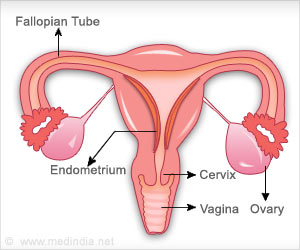New findings indicate that drinking levels in Italy among some women are the same as compared to those of high-risk drinkers in the new world , and this is revealed by the coexisting levels of FAS and FASD.
Most studies that involve fetal alcohol syndrome (FAS) and fetal alcohol spectrum disorders (FASD) have often suggested their link to heavy and/or binge drinking, especially in minority and poor populations. It was also considered that the people in Western Europe are relatively more moderate in their consumption of alcohol as compared to their counterparts in the US. But new findings are now indicating that the drinking levels among some women in Italy are as high as many drinkers across the world.Alcohol consumption in Western Europe is generally considered to be more moderate in nature – daily, and with meals – than it is in other countries such as the United States. New research indicates that this may be an "urban myth," and that drinking levels in Italy – as measured by the prevalence of fetal alcohol syndrome (FAS) and fetal alcohol spectrum disorders (FASD) in Italian primary schools – are just as high as they are in the new world.
Results are published in the September issue of Alcoholism: Clinical & Experimental Research.
"Both human and animal studies have shown that heavy and binge drinking are the most highly associated with FAS damage," said Philip A. May, professor of sociology, and family and community medicine, at The University of New Mexico. "A common perception is that daily drinking with meals is less damaging to the fetus, and that this drinking pattern is the norm in Western Europe. While we have still not untangled or answered this relationship, our study results do show that there are individuals in Italy who drink heavily enough to produce a rate of FAS which needs our attention." May, also an epidemiologist is the study's corresponding author.
"Prior to this study," said Robert J. Sokol, distinguished professor of obstetrics and gynaecology and Director of the C.S. Mott Centre for Human Growth and Development at Wayne State University, "I don't believe there was a good number for prevalence of FAS in Italy. This says Italy looks like the rest of the world in terms of drinking patterns, and that related birth outcomes are similar amongst the relatively heavily exposed kids."
May and his colleagues used a relatively new study method called "active," as opposed to "passive," surveillance. "Active surveillance has not been used very much, especially in schools," explained May, "other than in South Africa and only once before in the U.S., in Washington State. Most studies that gather data on the prevalence of FAS are passive in nature, waiting for children with developmental growth or structural problems to be referred to paediatric, genetic or dysmorphologic specialists. But when we go out and actively search for cases within a mainstream population, we can find up to as many as three times as many children who really do have the disorder."
Advertisement
Results indicate that the prevalence of FAS in this province of Italy was 3.7 to 7.4 per 1,000 children, and the prevalence of FASD was 20.3 to 40.5 per 1,000 children. These findings exceed previously published estimates of both FAS and FASD for the western world.
Advertisement
Both May and Sokol pointed out that a common problem of gathering data on pregnancy and drinking is that it is typically retrospective in nature.
“When you interview well-educated women in the developed world,” said May, “they know that drinking and pregnancy don't mix, so their responses tend to reflect a measure of guilt and you may obtain results that are not completely accurate.”
But the data on maternal drinking that were obtained by May and his colleagues, noted Sokol, were consistent with the levels of FAS and FASD that were also found.
“The study asked about the mean number of drinks currently consumed per week, after pregnancy," noted Sokol, "which is probably a surrogate measure for what they were drinking five years previously: 16 drinks among the mothers of the FAS children versus 1.5 drinks among the mothers of the control children. This has nothing to do with light drinking. Previously people might have thought that women in Italy drank differently, but this turns out to not be the case. They drink, apparently at binge levels, and they have kids who have damage.”
Sokol hopes that future studies will use similar methods to examine different cultures and different ethnic groups. "They brought in world experts to look at the kids," he said, "and you can't do any better than that. They used a very rigorous system of identifying the kids, and the methodology and diagnoses were particularly good. I think that there is value in looking for FAS in different groups in different parts of the world because sooner or later we will find differences in susceptibility based on genetic differences.”
Meanwhile, said May, “the average reader should continue to heed the U.S. Surgeon General's warning that there is no known safe level of drinking during pregnancy, particularly on a regular basis. We don't want to scare women who may have had a drink or two before they found out they were pregnant that they're going to have children with FAS problems but, to be on the safe side, women should abstain if possible.”
Source: EurekAlert.





